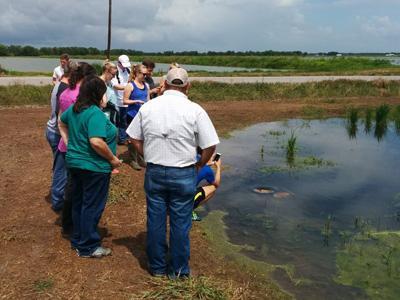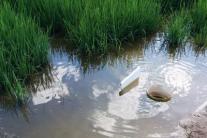On Friday, April 4th, the University of Louisiana at Lafayette hosted its Annual NSF EPSCoR Project Meeting for the
UL Lafayette research team calculates the stress on Louisiana's water supply
Wed, 01/18/2017 - 7:38amIn work recently published in Environmental Research Letters, a team of scientists and engineers at UL Lafayette have developed a new framework for understanding the balance of water demand and water availability throughout Louisiana. The research was funded by the National Science Foundation. Lead author, Hisham Eldardiry, a recent graduate of the UL Lafayette Systems Engineering PhD program, says "This work is important for water managers and policy makers because it is the first time we've been able to look at all of our water needs on a very fine scale to see where we stress the system to meet demand". Coauthors Emad Habib, a professor of civil engineering, and David Borrok, a professor of geology supported the effort. "The water stress analysis springs from a long-term collaboration between science and engineering" indicated Habib. "The long-term goal of this work is to identify strategies for building sustainable water systems in Louisiana and in the Southeastern U.S.". Borrok recently presented the team's water stress calculations at the 9th regular meeting of the state Water Resources Commission. "Our research shows that much of Louisiana's groundwater is highly stressed, while most of our surface water is in great shape", adds Borrok, "These findings can help to identify opportunities to alleviate stress on the overall system". The research team plans to follow up this initial work by examining how water stress in Louisiana is impacted by water quality. They will also run climate and water demand simulations that can help to predict future water stress conditions for the state.




